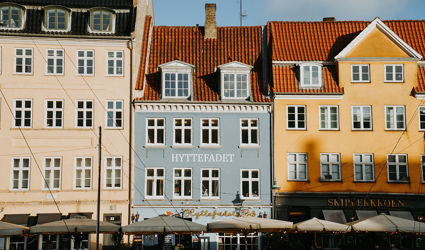Europe - Innsbruck
Day 2 - Innsbruck, Austria, 08.20.2018
Today's Garmin Mileage: 16 km
Today is a day to really explore all that Innsbruck really has to offer. Innsbruck is the capital city of Tyrol in western Austria and the fifth-largest city in Austria. It is in the Inn valley, at its junction with the Wipp valley, which provides access to the Brenner Pass some 30 km (18.6 mi) to the south.
Located in the broad valley between high mountains, the so-called North Chain in the Karwendel Alps (Hafelekarspitze, 2,334 metres or 7,657 feet) to the north, and the Patscherkofel (2,246 m or 7,369 ft) and Serles (2,718 m or 8,917 ft) to the south.
Innsbruck is an internationally renowned winter sports centre, and hosted the 1964 and 1976 Winter Olympics as well as the 1984 and 1988 Winter Paralympics. Innsbruck also hosted the first Winter Youth Olympics in 2012. The name translates as "Inn bridge".
Today we decided to take advantage of
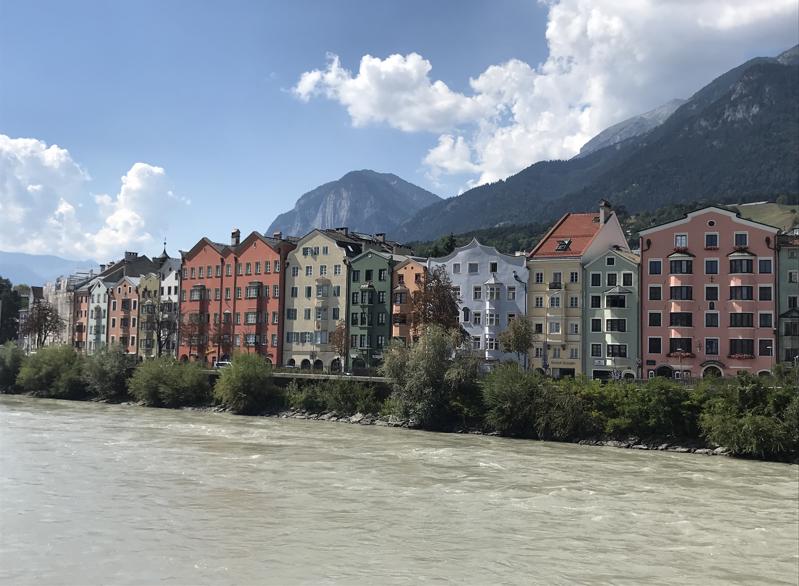
the Innsbruck City Card ($43 Euros) to take in of as many attractions a day can fit in (however not nearly as many as an asian tourist will cram in a day). The City Card includes all the cable cars, funiculars, public transit, museum entrances, hop-on-hop-off bus, as well as, discounts for many attractions and shops in the area.
Innsbruck’s old town dates back from the middles ages, and is over 800 years old. We wandered down our street - Maria Theresa to take in the sights of "The Golden Roof" of the splendid alcove balcony of the Emperor's residence. It is where the Emperor Maximilian I’s bore witness to jousting tournaments in the city square many years ago. Just across the square lies the "City Tower" where we climbed to the top to see the magnificent views of the city below. It is where guards from ancient times kept watch for fire, storms and enemies.
From here we wandered over to the funicular's central station- the Hungerburgbahn. Its modern entrance looks like a large piece of ice hovering over the entry to the funicular. From here we took the funicular up to the top and then transferred to the Nordkette Bahanen to take the rest of the way to the top of the Hafelekar mountain. It is here where many people start their hikes; in a number of directions and varying complexity. Hiking up to the top of Hafelekar Peak to 2,400 meters is where you have a 360 degree view of the ranges and valleys below. Simply breathtaking.

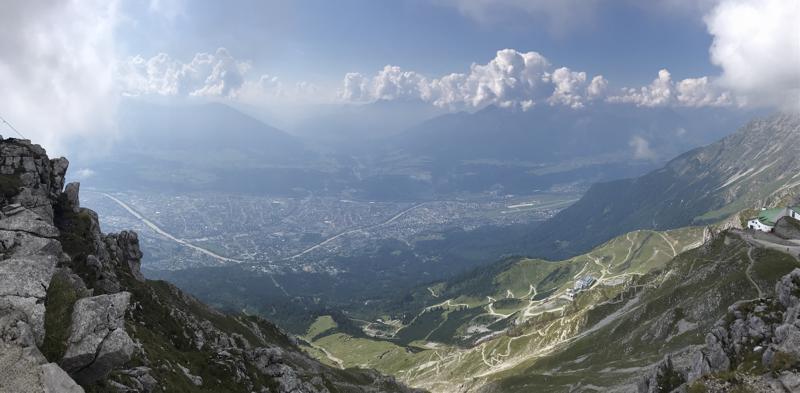
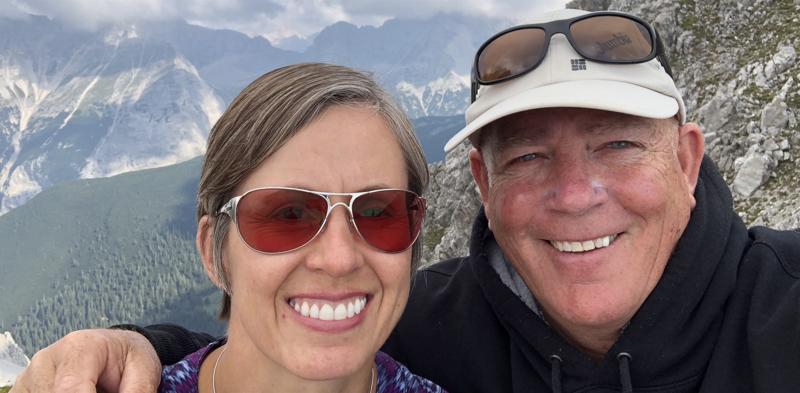

After hiking around the peak we decided to head down to take in more that Innsbruck has to offer. From the funicular station near the river we boarded the Hop-on-Hop-off tour bus. It takes a nice loop around Innsbruck and stops off at many of the tourist attractions and sites. It was a nice opportunity to catch our breath while we listened to commentary about the area. We got off at the Ambras Castle stop to visit the Renaissance styled palace. it is here where you can experience the lifestyle of Archduke Ferdinand II (1529-1595), who promoted the arts and sciences as a true Renaissance prince. He loved to collect art, blown glass and artifacts from his era. The Ambras Castle foundation has restored the complex and house many of these artifacts. It is also one of the locations of the Habsburg Portrait Gallery from his period of rule.
After strolling through the extensive gardens of the Ambras Castle we hustled over to catch the tram to head up to the old Olympic Down Hill location and cable car. Unfortunately the cable car location we headed for was the old cable car location (not knowing it at the time). By the time we found the old Olympic Site were too hot and tired to walk another 7 km to reach the new cable car location to head up to the top. So hanging out in the shade we waited for the J bus to head back to town.

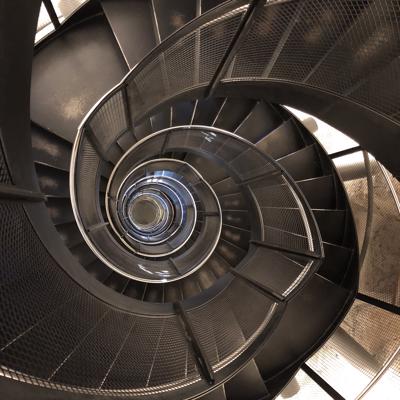

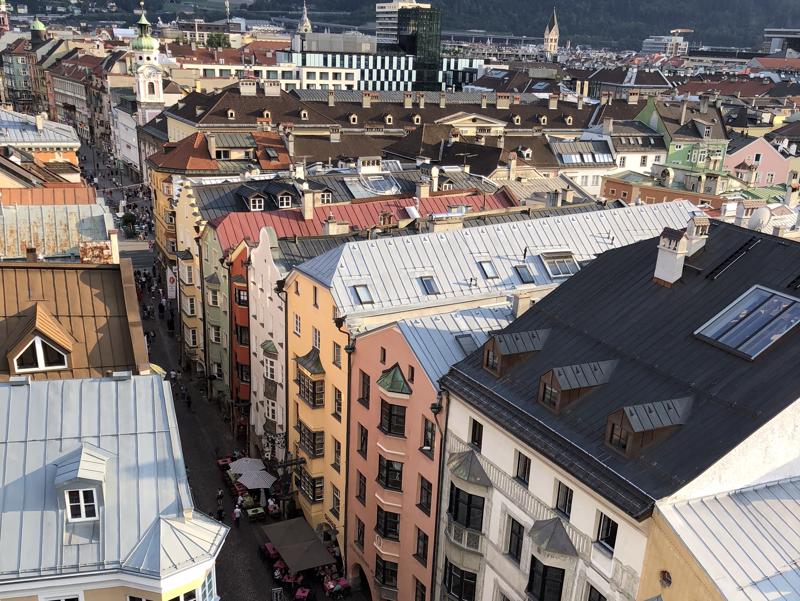
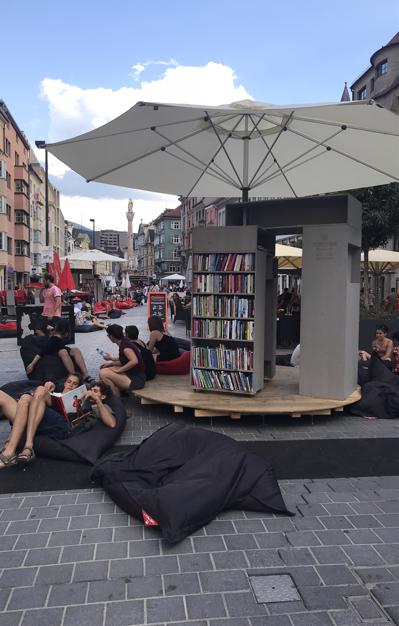
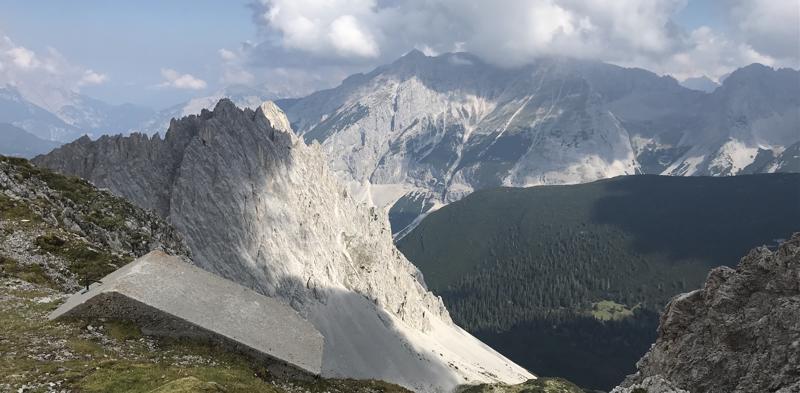
The bus came along in about 15 mins and was a comfortable ride back to town. What a great day of exploration. Innsbruck is really a city for outdoor enthusiasts who love hiking, biking (mountain biking that is), and skiing in the winter time. They have developed a number of cable cars to take visitors (and locals) up a number of mountain tops in all seasons. The local transportation is fantastic and comes frequently. Having developed all of these amenities, Innsbruck attracts a number of international visitors to tour and take part in the all the out door activities that Innsbruck has to offer.
We managed to find a local Brew house in the old town that served up good traditional Austrian meals with fantastic local beer and Aperol Spritzers. Last night we had the cheese spatzle and a sausage and sauerkraut dinner. Tonight Brenda tried a traditional "Wurstsalat" (sausage and onion salad) and Rick had the Beef Goulash. We are never disappointed when we have local fare at the Brew house restaurants.
So.. bring a suitcase full of money and you can experience anything your heart desires.
Another great day of touring and tomorrow we pack our bags and head to Switzerland for 2 days.
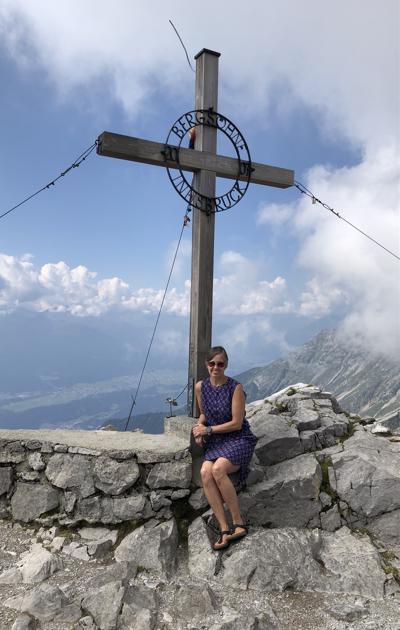
Wurstsalat - Sausage and Onion Salad
10.5 ounces sausage - cut into strips (Lyoner, Regensburger, Stadtwurst or Fleischwurst/Extrawurst (German Bologna)
1 medium onion - sliced
3-4 pieces pickled cucumber (gherkin) - cut into strips
2 tablespoons olive oil
1 tablespoon white wine vinegar
1 tablespoon water from the canned pickles
3 tablespoons chives - chopped
5.3 ounces Emmentaler cheese - cut into small strips (optional)
a dash of sugar
salt and pepper - to taste
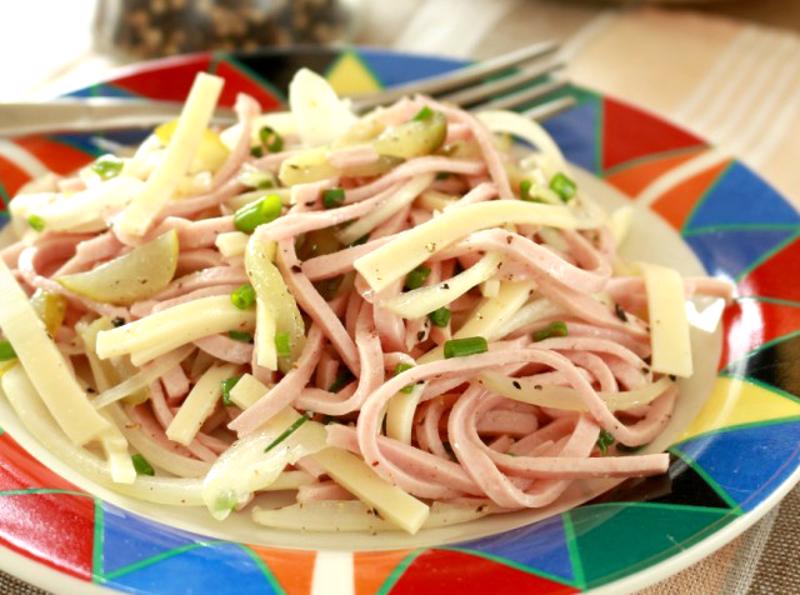
Instructions
In a small bowl, combine oil, vinegar and water from canned pickles. Add a dash of sugar and mix until dissolved. Set aside.
In a larger bowl, toss together sausage strips, chopped onions, pickles and chives.
Pour the liquids over the salad, season with salt and pepper and mix well.
Add the cheese and toss a few more times.
Austrian Goulash
Ingredients
4 lbs stew cut meat, cut into bite-sized chunks
flour seasoned with kosher salt & cracked pepper
(about 1 cup flour, 1 Tbsp salt & pepper)
2 large onions, sliced thin
olive oil, for searing
1 tablespoon hungarian hot paprika
1 -2 teaspoon mild paprika
2 garlic cloves, sliced thin
1 small lemon, zested
1 tablespoon caraway seed
2 tablespoons tomato paste
4 cups tomato sauce (large can)
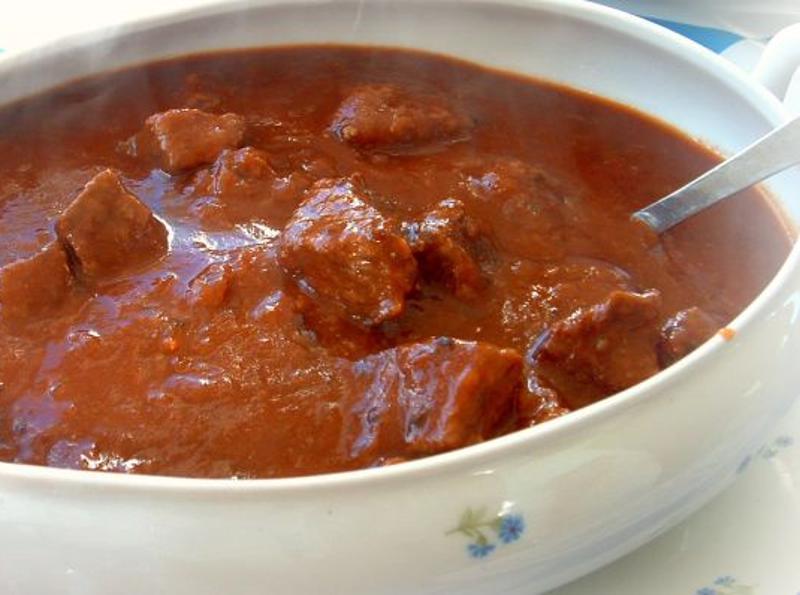
1?2 cup beef (or water) or 1?2 cup chicken stock (or water)
kosher salt & pepper
flour (for searing meat)
Directions:
You will need a large Dutch oven with a lid for best results. Add just enough olive oil to coat the pan and turn the heat high enough to make the oil shimmer, but not smoke.
Pat the meat dry and dredge in flour, seasoned with kosher salt & cracked pepper.
Add one piece of meat to the hot oil to make sure that it sizzles. Add the remaining meat, without crowding the pan and sear for about 3-4 minutes per side. You want a golden crust that will give the gravy great flavor.
Cook the meat in batches, if necessary and set aside in a bowl-- to collect the juice.
When all the meat is seared, turn the heat to medium and add a little more olive oil to the pan and cook the onion until tender, 3-4 minutes.
Add the sliced garlic and cook till fragrant-- 30 seconds or so.
Add the tomato paste and paprika, and cook for 1-2 minutes.
Add the tomato sauce, caraway seeds, lemon zest and chicken stock and stir well.
Bring to a simmer for about 15 minutes and taste for seasoning. Adjust as necessary. If the sauce is too thick, thin with a little more chicken stock or water until it is the consistency of a gravy.
Simmer for 2 hours, or you can use a slow cooker for 4-6 hours.
This stew tastes even better if made one day in advance.
Serve over buttered egg noodles or spaetzle or Bavarian Bread Dumplings "Semmel Knoedel"
Semmelknodel (Bavarian Bread Dumplings)
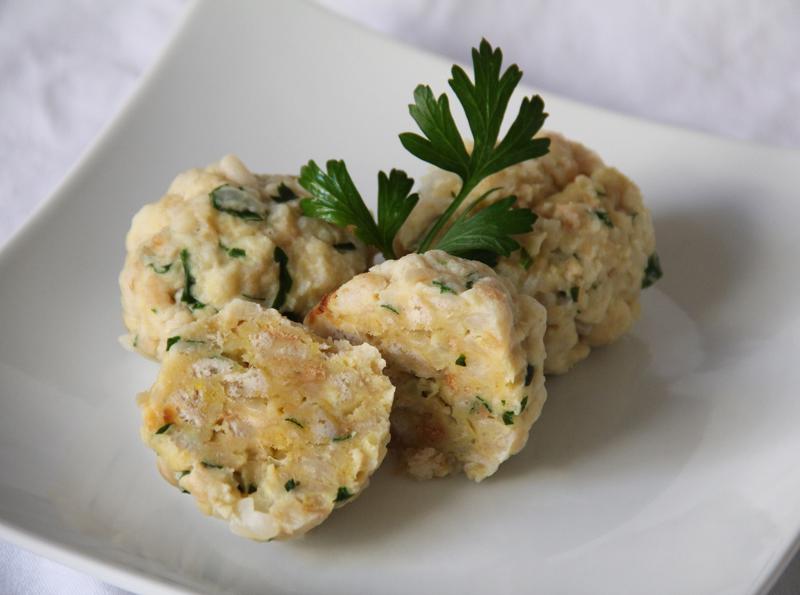
Ingredients:
5 kaiser rolls, thinly sliced
3 tablespoons olive oil
1 small yellow onion, minced
2 cups milk
1?4 cup parsley, minced plus more to garnish
1?4 cup flour
1?2 teaspoon nutmeg, freshly grated
3 eggs, lightly beaten
DIRECTIONS
Heat oven to 325 degrees F.
Spread sliced rolls onto 2 baking sheets, and bake until slightly dry (12 minutes). Transfer to a large bowl and set aside.
Heat oil in a 4 qt saucepan over medium-high heat. Add onion, and cook, stirring occasionally, until golden brown (10 minutes).
Transfer to the bowl with the bread and set aside.
Add milk to the saucepan; bring to a boil over high heat, and pour over bread. Add parsley, flour, nutmeg, and eggs.
Season with salt and pepper, and using your hands, mix until evenly combined.
Bring an 8 qt saucepan of salted water to a boil over high heat. Moisten hands with cold water, and form bread mixture into 2 inch balls and set aside.
Working in batches, add balls to boiling water, and cook until firm (15 minutes). Using a slotted spoon, drain briefly on paper towels, and transfer to a serving platter.
Get started right away!
What are you waiting for? Capture your adventures in a digital diary that you can share with friends and family. You can switch between any of your devices anytime. Get started in our online web application.
